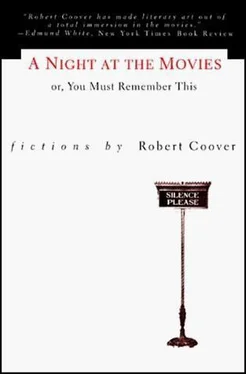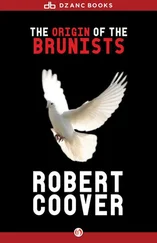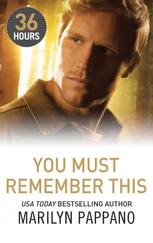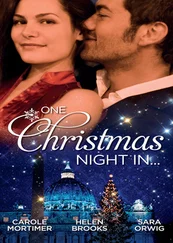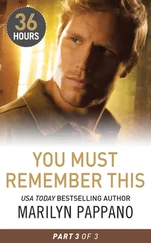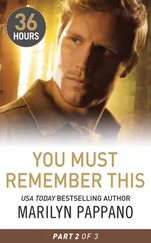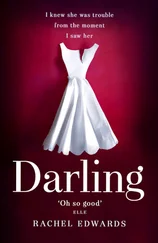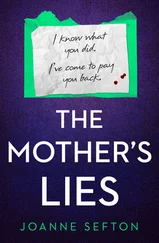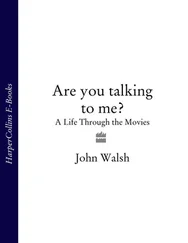Now the pallbearers climb the mound of freshly dug earth with their burden, the camera tilting upwards to follow: they hover above, dark against the white sky, framed in the tops of cypress trees. A quiet unarticulated murmur begins to be heard, almost inaudible at first, then gradually augmenting. The lips of the priest and his assistants seem to be moving slightly, then they close firmly, but the murmur continues, growing louder. The priest turns his gaze upon the pallbearers and nods slightly: the murmur breaks off instantly.
Carefully, the pallbearers lower the casket, the camera tilting, following its descent. As the casket enters the open grave, the camera passes overhead and zooms in sufficiently to watch it lower, holding only the twenty-four white hands of the pallbearers in the frame with the casket. The hole itself is utterly black, seems bottomless; the shadows in and around the casket gradually deepen.
Suddenly, the hands of the corpse lift tremblingly from his chest, reach plaintively up toward the pallbearers, toward the camera. The twenty-four hands release the casket simultaneously, as if in choreographed shock, and there is a brief loud gasp, almost a cry, from the multitude of mourners. The casket drops away, disappearing instantly into the blackness, but making no sound in its fall. Before the sound of the brief gasp has faded again to silence, the camera too withdraws from its overview of the grave, assumes a position at ground level about ten feet away.
During the prolonged stillness that follows, the camera, remaining at ground level, slowly zooms in toward the lip of the grave. There is a faint scraping sound, like the sound of mice in the wall. It breaks off, begins again, breaks off, continues. Then, at last, a pale trembling hand with long fingernails emerges from the grave and clutches at the edge. A moment later, the other hand appears. It claws for a hold, discovers at last the shovel, closes around it. Scraping sound now greatly amplified. The head of the corpse appears above the grave's edge. The eyes still protrude, the lips still smile rigidly. The head pivots slowly, jerkily, like that of a wooden puppet, until it comes to stare straight at the camera. Slow withdrawing zoom. With a final effort, the corpse drags himself out of the grave, staggers to his feet, stands spare and tottering at the tip.
Suddenly, a man, a pallbearer perhaps, lunges forward, jostling the camera on the way, leaps on the corpse, and tumbles to the freshly dug earth with it. He struggles to his feet (everything momentarily is in motion), lifts the dead man above his head and hurls it, its limbs twitching violently, back into the grave. There is a deep-throated community wail, almost a scream, then silence.
Close-up of the pallbearer's face: his thin lips are pulled back from exertion, his eyes bulge slightly in excitement or horror, as he stares down into the grave. Then, slowly, he lifts his eyes and gazes about him: he is alone, the cemetery is empty.
The pallbearer stumbles to the gate of the cemetery and stares down the dusty road leading to the village. It, too, is desolate. The village lies distantly on the treeless plain, the cathedral rising above it. The pallbearer starts running down the road, limbs out-flung, mouth agape, the camera following at a discreet distance. He arrives at the edge of the village, stops, peers about as though confused. The village is, as at the beginning, empty and silent under the overcast sky. He staggers toward one side street, peers down it, hurries to another. He seems to be screaming, but no sound is heard. He disappears down one of the side streets, the camera pausing to hold a view of the main street and the cathedral beyond. And now, faintly at first, but more and more clearly, the hollow voice as before, already repeating and echoing itself: "I have risen! I have risen!" It folds in upon itself until the words are indistinguishable, and fades away.
Cut to the tattered scrap of white cloth hanging motionless on the clothesline. Slow pan past the clay walls and shuttered windows to the door. Silence. Slow pan to the pallbearer, standing about six feet from the door, clenching and unclenching his pale fists, breathing erratically. He lunges forward, hammers on the door with his fists. This hammering is not heard, but very faintly there is the sound of a heart beating. The pallbearer rattles the shutters, bangs again on the door. He tries the handle: it opens. The sound of the heartbeat increases perceptibly. He rushes inside, the camera following.
The room is plain with white walls, a dirt floor, empty but for a chair in the middle; on the chair: a black dress and shawl. The heartbeat is now clearly audible. The pallbearer grabs up the dress, stares at it a moment, then pulls it on over his black formal suit. His movements are clumsy, overanxious, his face showing tension and fear, yet a kind of pleasure as well, and a fierce determination. Once in the dress, he throws the shawl over his head, stoops, and peers up at: the pallbearer standing before her. The pallbearer smiles faintly, nods emphatically, and runs out of the house.
In the street, the pallbearer hesitates, then bursts through the door of the next house, the camera following. Again, a plain room and clothes on a chair. And again he pulls on the dress and shawl, stoops, peers up at: the pallbearer, now grinning, almost as though in greed or lust, rubbing his thin white hands together. Heartbeat continues evenly throughout these scenes.
The pallbearer bursts into an empty room: not even a chair with clothes. But by a window, on the dirt floor, he finds a fresh white flower. Smiling faintly, he picks it up, removes the wilted flower from his own lapel, inserts the fresh one. He turns and, smiling confidently now, offers the wilted flower to: the pallbearer standing beside him.
The pallbearer pulls the shawl over his head, stoops, peers into a mirror at herself. She sees in the mirror, behind her, the pallbearer, smiling at her over her humped back.
The pallbearer sits at an empty table and fastens the fresh flower in his lapel. He turns and offers the wilted flower to the pallbearer seated beside him, who offers it to the pallbearer beside him, who in turn offers it to the pallbearer beside him. The four turn, smiling, to the pallbearer standing behind the table. He returns their smile with a slight bow, his face damp now with perspiration, and accepts the wilted flower.
A shawl. He dons it, stoops over, peers up at the pallbearer, who reaches up her skirts and pulls out another dress and shawl. He dons them, stoops beside the other old woman, peers up at the pallbearer, who reaches up her skirts and pulls out another dress and shawl. He dons them, stoops beside the other two old women, peers up at the pallbearer, who reaches up her skirts, etc. Heartbeats continue.
Cut to the street. The pallbearer is rushing feverishly in and out of houses. Occasionally, doors open behind him and old women peer out, all of them stooped and wearing black shawls.
The pallbearer arranges his tie in the mirror, turns, smiling, to accept the fresh white flower from the pallbearer, three old women looking on.
Donning a shawl, the pallbearer lifts an empty wineglass to toast the pallbearer across the table from her, also holding an empty glass. The pallbearer standing beside them pours their glasses full, bows, hurrying away, adjusting the wilted flower in his lapel.
The pallbearer, smiling wryly, hands a fresh white flower to the camera. The camera moves toward a mirror on the wall: reflected there is the pallbearer, adjusting the flower in his lapel.
The street is full of women in shawls, watching the pallbearer break into one house after another. He drops the wilted flower, races back frantically to snatch it up, tripping and tumbling over himself as he does so, then picks himself up and bursts into another house. Heartbeats augment slightly.
Читать дальше
